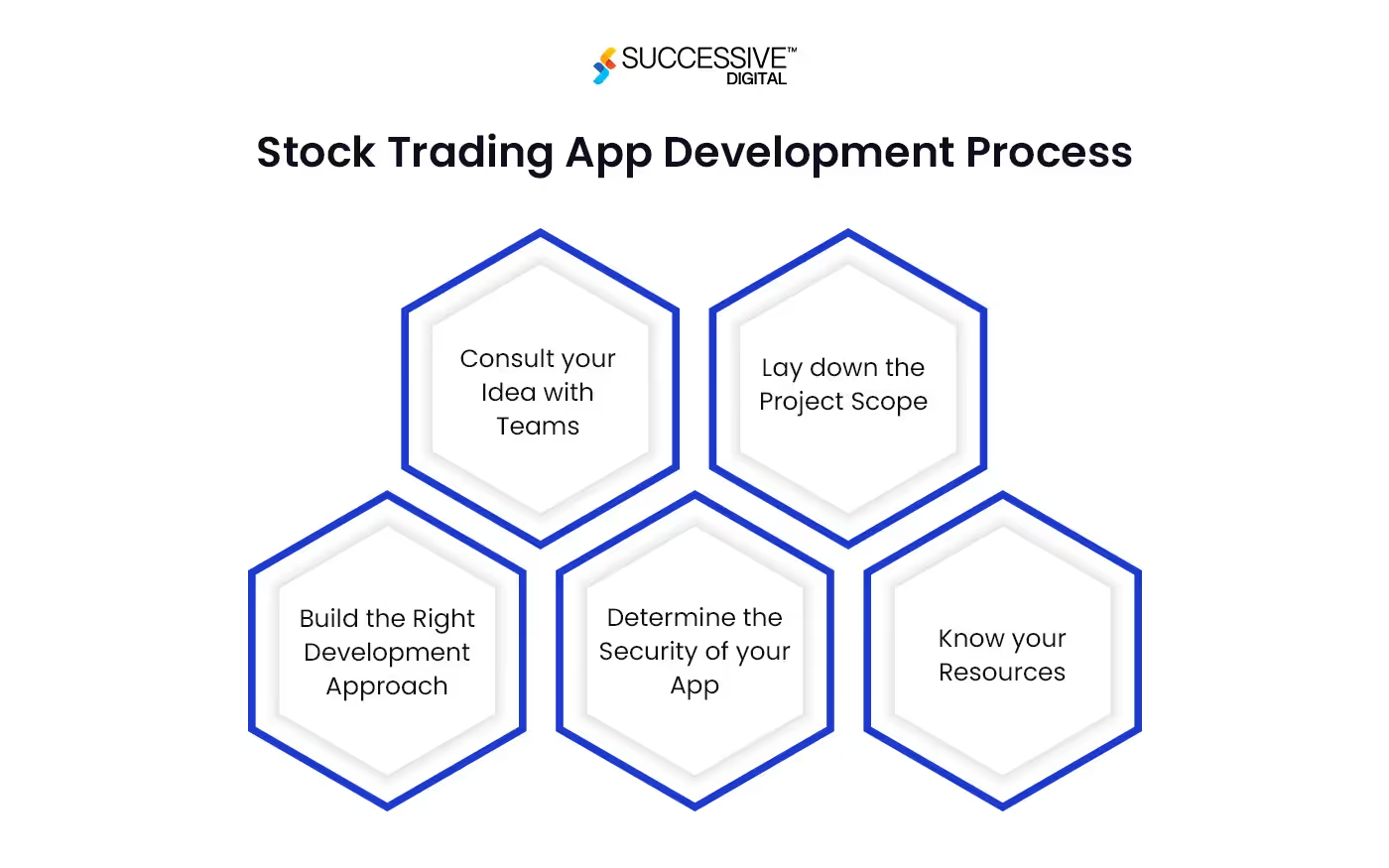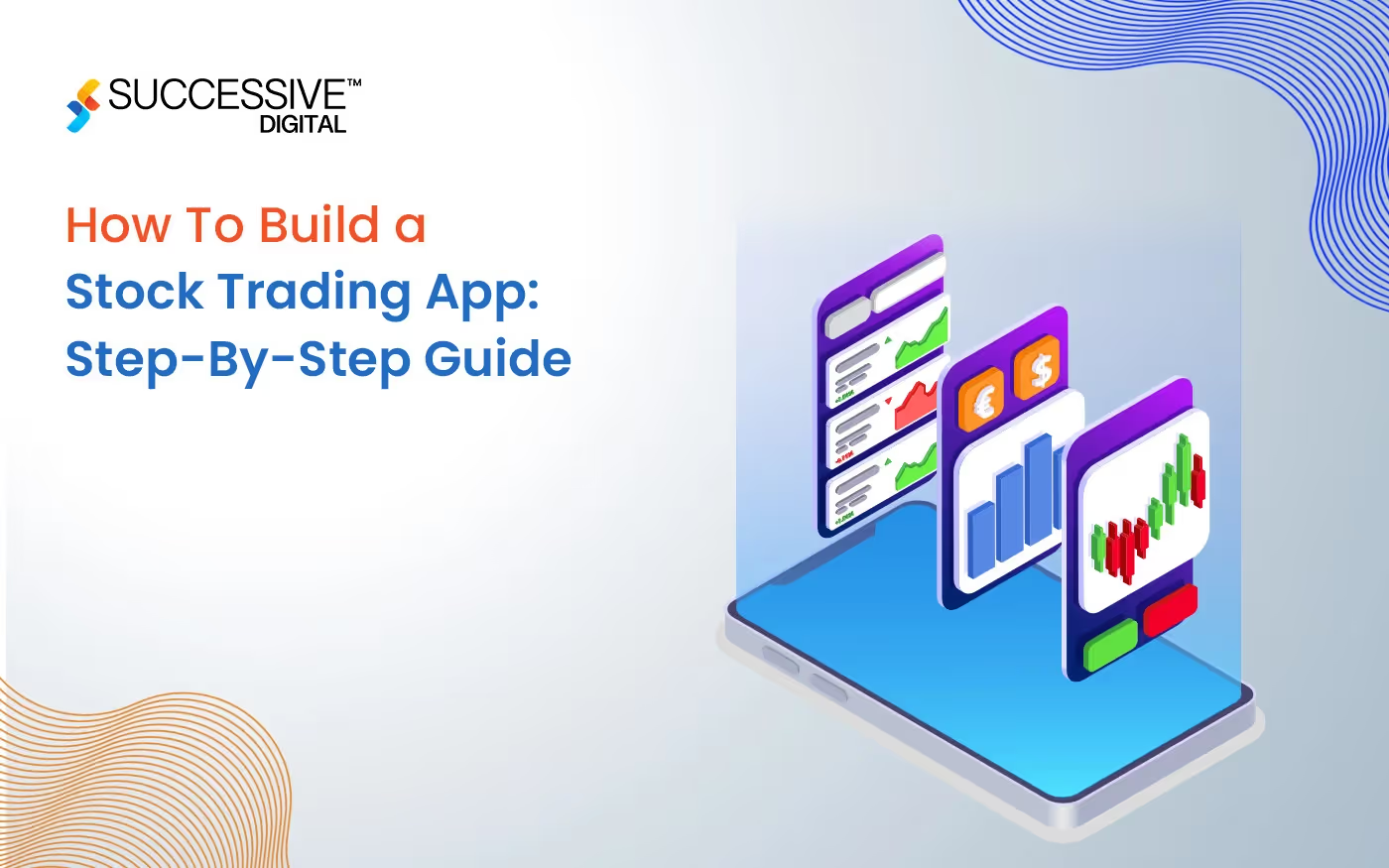Building a stock trading app is a bold and worthwhile challenge that intersects the dynamic fields of finance and technology. These apps empower users to trade stocks, monitor their portfolios, and access market data in real time, all with the ease of their smartphones or computer systems. As the need for financial literacy and investment grows, a stock application can offer sizable opportunities for innovation and business growth.However, developing such an application is challenging. It calls for professional stock trading app development, rigorous adherence to regulatory standards, and a meticulous approach to software programs. Ensuring data safety, imparting real-time updates, and providing a seamless personal experience are paramount. Additionally, the app should integrate with numerous financial offerings and information vendors, manage vast volumes of transactions with minimal latency, and offer capabilities catering to novice and experienced traders.This blog simplifies the complex process of building a stock trading app into manageable steps. From initial market research and compliance considerations to the intricate details of designing the architecture, developing the frontend and backend of the app, and deploying the app, each phase is crucial to the final product's success.

Step 1: Understanding the Market and Compliance Requirements
Before developing a stock trading app, thoroughly recognizing the marketplace and its regulatory frameworks is essential. The financial industry is rather regulated, with compliance necessities together with KYC (Know Your Customer) and AML (Anti-Money Laundering) protocols necessary to prevent fraud and ensure the integrity of transactions. Regulatory bodies like the SEC in the United States and MiFID II in Europe set stringent requirements for facts safety, consumer privacy, and financial operations. Additionally, acquiring the essential economic licenses to function legally within your goal marketplace is imperative. Adhering to these regulations no longer ensures prison compliance but builds user trust and credibility.
Step 2: Conceptualization and Market Research
Conceptualizing a stock application begins with identifying the audience and information about their desires. Conduct thorough market research to pinpoint capabilities that resonate with potential users, including real-time stock costs, easy trade execution, and robust portfolio management tools. Analyzing competitive stock apps can offer insights into successful layout elements and functionalities and help you get mobile app development for your stock app right. Additionally, companies can reveal feedback and special requests by being attractive to potential users through surveys and awareness. This research helps set unique features, ensuring it meets user expectations and stands solid in a competitive market. A well-defined idea aligned with market demands is crucial for the app's fulfillment.
Step 3: Designing the Architecture
Designing the structure of stock trading apps includes creating a solid and scalable framework that ensures seamless overall performance and protection. The architecture is divided into frontend, backend, and infrastructure components. The front end, constructed with frameworks like React Native or Flutter, specializes in creating a responsive user interface. The backend, evolved using languages like Python, Java, or Node.Js, handles enterprise logic, statistics processing, and communication with 3rd party APIs. Databases like PostgreSQL control transactional information, while Redis handles real-time information caching. The infrastructure, hosted on AWS or Google Cloud systems, guarantees excessive availability, scalability, and safety through tools like Docker for containerization and Kubernetes for orchestration.
Step 4: Setting Up the Development Environment
Stock trading app development requires setting up an environment as a vital step that lays the foundation for effective and organized coding. Begin by deciding on the proper model management system with Git and a website hosting platform like GitHub or GitLab to manage supply code and collaborate with the team. Select Integrated Development Environments (IDEs) like Visual Studio Code, PyCharm, or IntelliJ IDEA to streamline coding, debugging, and checking out. Incorporate challenge management tools like Jira or Trello to tune obligations, sprints, and milestones. Finally, non-stop integration and continuous deployment (CI/CD) pipelines should be set up using Jenkins or GitLab CI to automate checking out and deployment, ensuring constant code satisfaction and faster releases.
Step 5: Building the User Interface
Building a stock trading app's user interface (UI) specializing in an intuitive, responsive, and visually attractive experience is crucial. Start with wireframing and prototyping tools like Figma or Sketch to design the layout and user flow. Use frameworks, including React Native, for cross-platform improvement, ensuring consistency throughout iOS and Android. Develop reusable components like buttons, forms, and data tables to maintain a uniform look and feel. Implement clean navigation with the use of React Navigation or Flutter's Navigator. Incorporate real-time information visualization tools like charts and graphs, making sure they update seamlessly to offer customers updated market information. Prioritize user-friendly layout to beautify engagement and usability.
Step 6: Develop the Backend
Developing the backend for a stock trading app involves creating a strong server-side architecture that handles data processing, business logic, and integrations. Choose a backend language like Python (Django), Java (Spring Boot), or JavaScript (Node.Js) for the core logic. Design a secure and scalable database schema using PostgreSQL for structured data and Redis for real-time data caching. Implement OAuth 2.0 for stable authentication and authorization. Integrate with 3rd party APIs to fetch real-time stock data and execute trades. Develop RESTful or GraphQL APIs to manage consumer-server conversations. Ensure effective management of transactions and minimal latency to offer a continuing buying and selling experience.
Step 7: Testing and Quality Assurance
Testing and Quality Assurance (QA) are vital to ensure the reliability and protection of stock applications. Begin with unit-testing out frameworks like Jest for JavaScript, PyTest for Python, or JUnit for Java to confirm individual components function efficaciously. Conduct integration testing with tools like Postman to ensure seamless interactions between different modules. Perform end-to-end testing using Selenium or Cypress to simulate real scenarios and workflows. Implement security by becoming aware of vulnerabilities and ensuring compliance with regulatory requirements. Continuous testing through CI/CD pipelines allows early code maintenance and catches issues early, maintaining a strong, steady, and better-performing application.
Step 8: Deployment Activities
Deployment of a stock trading app entails numerous vital steps to ensure a clean release. Use CI/CD pipelines with equipment like Jenkins, GitLab CI, or GitHub Actions to automate the build, test, and deployment, ensuring steady and mistakes-free releases. Containerize the software using Docker and control deployments with Kubernetes for scalability and resilience. Post-deployment, constantly monitor performance with Prometheus and visualize metrics for the usage of Grafana. Employ the ELK Stack (Elasticsearch, Logstash, Kibana) for logging and troubleshooting. Regularly replace the app with new capabilities and protection patches based on feedback. Maintain robust customer support to help customers and promptly cope with any issues.ConclusionBuilding stock trading apps is a complicated but rewarding endeavor. It requires deep expertise in mobile app development technology and the finance industry. Following this step-by-step information, entrepreneurs and companies can create a stable, efficient, and user-friendly stock buying and selling platform that meets users' desires while complying with regulatory standards. Remember, continuous learning and modeling are essential in the ever-evolving ecosystem of financial technology.
.avif)










.jpg)









